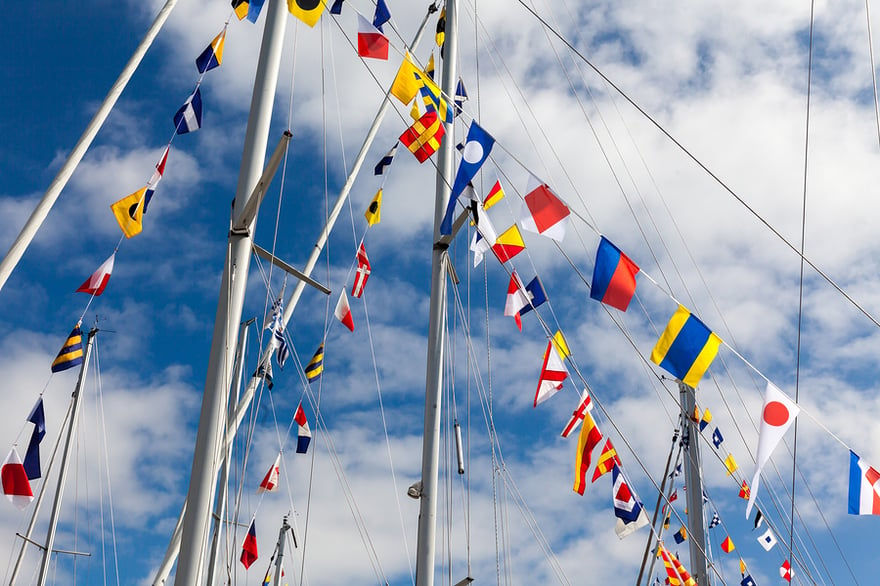Sailing Signals

image credit: Bigstock.com
There are several flags and sound signals that signify different things to experienced sailors, but these can be quite bewildering for novices. Let’s have a look at some of the essential signals that you need to know in sailing.
Postponement Signal
The most important signal is the Answering Pennant (AP), which is denoted by a flag with vertical red and white stripes, communicating to sailors that a race is to be postponed. There are several different methods used to signify the postponement of a race, depending on the duration of the postponement.
For instance, if the race hasn’t started, postponement is indicated by displaying the AP flag, along with two short sound signals when the flag is raised, and one sound signal when the flag is lowered.
Two short sound signals, followed by the raising of the AP flag and Flag One, which is a white flag with a red circle on it, signifies the postponement of a race till an hour later. One short sound signal will be sounded when these two flags are lowered. Similarly, postponing a match by two hours follows the same procedure, except that Flag Two – blue with white circle – is raised along with the AP flag, instead of Flag One. Flag Three, a flag with blue, white, and red stripes, indicates a postponement of three hours, and is likewise raised along with the AP flag and same sound signals.
Two short sound signals, followed by raising of the AP flag and Flag A, which is a larger white and blue flag with two pointed ends on the right, means that the race will be postponed to the next day, at the earliest.
For postponements that require sailors to return to land for more information, the process is similar to that of postponement for the day, except that the AP flag and Flag H (square with white and red halves) are raised instead. There are no lowering sound signals for these two types of postponement.
Start Signals
Five minutes before the race starts, Flag One will be raised after one short sound signal has been played. This is a warning signal to notify sailors that the race is about to begin. Four minutes before the race starts, Flag P – a square blue flag with a white square in the middle – is raised along with Flag One. One minute before the race begins, Flag P will be lowered, followed by a long sound signal to let participants know that the flag has been removed. The race officially starts when Flag One is removed, followed by one short sound signal.
Abandonment Signal
When the entire race is to be abandoned, Flag N will be displayed after three short sound signals have been played. Flag N is square with white and blue checks. One short sound signal will be broadcasted once the flag has been lowered. This particular signal tells sailors to return to the starting point so that the abandoned race can be restarted.
If the entire race has been abandoned and no plans are in place to restart the race for the rest of the day, Flag N and Flag A will be displayed following three short sound signals. There is no lowering signal for this situation. Similarly, if the race has been abandoned with information ashore, three short sound signals will be broadcasted followed by the raising of Flag N and Flag H.
To receive the latest updates on the happenings in the Singapore sports scene, or to find out more about some of the latest programmes on offer at ActiveSG, like our Facebook page here.





![ActiveSG Academies and Clubs Logo (Solid Colour)[8647]](https://www.activesgcircle.gov.sg/hs-fs/hubfs/ActiveSG%20Circle%202023Theme/images/ActiveSG%20Academies%20and%20Clubs%20Logo%20(Solid%20Colour)%5B8647%5D.png?width=150&height=65&name=ActiveSG%20Academies%20and%20Clubs%20Logo%20(Solid%20Colour)%5B8647%5D.png)




-01.png?width=200&height=141&name=Team%20Singapore%20Logo%20(Red)-01.png)



